Bio Agricultural
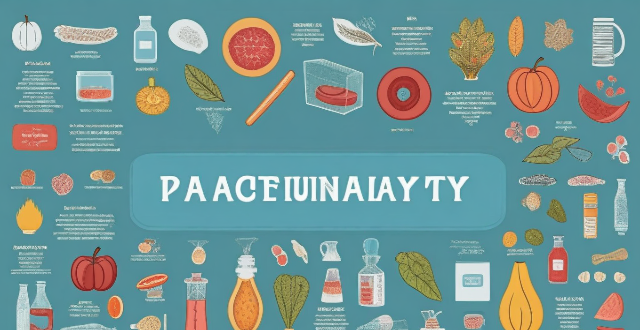
How do agricultural practices influence biodiversity ?
Agricultural practices significantly impact biodiversity, affecting ecosystem services like pollination and soil health. Monoculture reduces biodiversity due to habitat loss and pesticide use, while polyculture enhances it through diverse habitats and reduced chemical inputs. Organic farming benefits biodiversity by avoiding synthetic chemicals and promoting natural pest control, whereas conventional farming can harm it through pesticide toxicity and nutrient runoff. Land management practices like tillage disrupt soil ecosystems, while no-till farming preserves them. Water management also plays a role; sustainable practices like drip irrigation conserve water resources and support aquatic life. Adopting sustainable agricultural methods can help conserve biodiversity while maintaining productive systems.
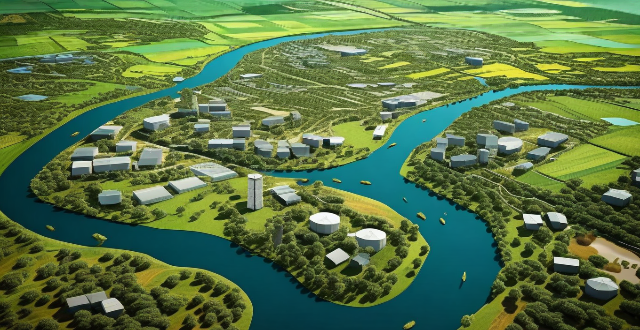
How do agricultural practices impact the environment ?
Agriculture is a vital sector for human survival, but its practices can have significant impacts on the environment. Deforestation and land use changes, water pollution, air pollution, soil degradation, energy consumption, and loss of biodiversity are all potential negative effects of agriculture. However, adopting sustainable practices such as conservation tillage, integrated pest management, precision farming techniques, and diversified cropping systems can minimize these impacts while maintaining agricultural productivity. It is crucial for farmers, policymakers, and consumers to prioritize environmentally friendly agricultural practices to ensure a sustainable future.
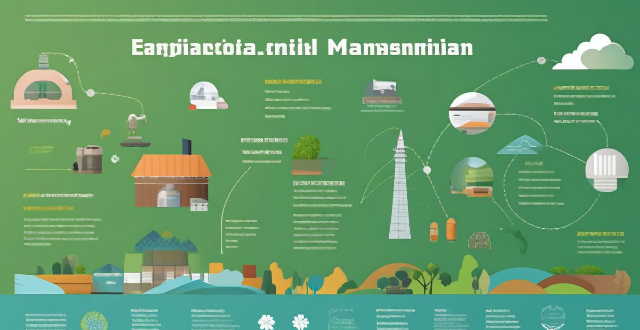
How does climate adaptation impact agricultural practices ?
Climate adaptation is crucial for maintaining agricultural productivity and sustainability amidst shifting environmental conditions. It impacts agricultural practices in several ways, including changes in planting schedules, use of drought-resistant crops, water management techniques, soil health management, livestock management, pest and disease management, diversification of crops and income streams, adoption of smart technologies, and policy and infrastructure support. By embracing these changes, farmers can continue to produce food while minimizing the environmental impact of their operations and building resilience against future climate challenges.

What are some best practices for climate risk management in the agricultural sector ?
Climate risk management is critical for the agricultural sector, which faces significant vulnerabilities due to changing weather patterns and extreme events. Key practices include assessing climate risks, integrating climate information into decision-making, enhancing ecosystem resilience, building human capacity, and planning financially with insurance. By adopting these strategies, farmers can adapt to climate change and reduce their risks, ensuring a more resilient agricultural sector.
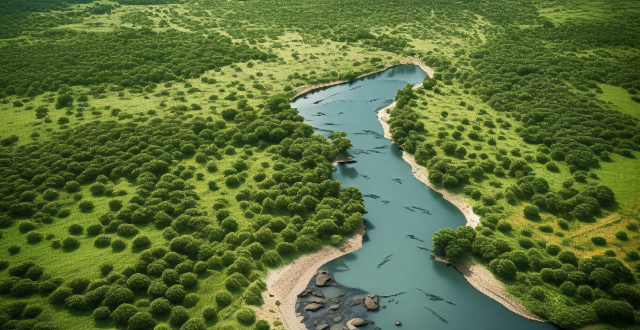
Is it ethical to engage in deforestation for agricultural purposes ?
Is it ethical to engage in deforestation for agricultural purposes? This question requires a nuanced understanding of both environmental ethics and the needs of agriculture. The case against deforestation includes loss of biodiversity, climate change, and soil erosion and water quality issues. However, the case for agricultural deforestation includes food production, economic opportunities, and sustainable practices. To navigate the ethical implications of deforestation for agriculture, a balanced approach is crucial, including reducing new land needed, regenerative agriculture, agroforestry, policy and regulation, and public awareness. While the need for agricultural land is pressing, engaging in deforestation without considering its broader ecological consequences is not ethically sustainable. It is essential to find ways to meet our agricultural needs while also preserving the integrity of our planet's ecosystems. By promoting sustainable agriculture and implementing protective measures, we can move towards a future where food production and forest preservation coexist harmoniously.

How do climate targets impact agricultural practices ?
Climate targets set by governments and international organizations play a significant role in shaping agricultural practices. These targets aim to reduce greenhouse gas emissions, promote sustainable development, and mitigate the impacts of climate change. The following are some ways in which climate targets impact agricultural practices: 1. Shifting towards Sustainable Farming Methods One of the primary impacts of climate targets is the shift towards more sustainable farming methods. This includes practices such as conservation tillage, integrated pest management, cover cropping, and agroforestry. 2. Adoption of Renewable Energy Sources To meet climate targets, farmers are encouraged to adopt renewable energy sources for their operations. This can include solar power, wind energy, and bioenergy. 3. Changes in Crop Choices and Rotations Climate targets may also lead to changes in crop choices and rotations to adapt to changing environmental conditions and reduce the carbon footprint of agriculture. This can involve planting perennial crops, diversifying crop rotations, and selecting climate-resilient crops. 4. Improved Water Management Water is a critical resource for agriculture, and climate targets often focus on improving water management to reduce water usage and protect water resources. This can involve dripper irrigation, rainwater harvesting, and planting water-efficient crops. 5. Carbon Sequestration and Soil Health Maintaining healthy soils is essential for mitigating climate change, as soils can act as carbon sinks. Climate targets encourage practices that improve soil health and increase carbon sequestration, such as composting, reduced tillage, and intercropping.

What is the impact of climate change on agricultural employment ?
Impact of Climate Change on Agricultural Employment: - Reduced Crop Yields due to droughts, floods, and loss of biodiversity can lead to job losses. - Changes in Cropping Patterns, such as shifting to new crops or shortened planting seasons, may require different skillsets and reduce employment opportunities. - Increased Pest and Disease Pressure can result in more labor for monitoring and management but also potential job losses from crop failures. - Infrastructure Damage and Displacement caused by extreme weather events can affect farming operations and employment levels. - Adaptation and Resilience Efforts, including developing resilient crop varieties and adopting sustainable farming practices, can create new job opportunities.

What are the economic implications of climate change for the agricultural sector ?
The text discusses the economic implications of climate change for the agricultural sector, including changes in crop yields, increased costs of production, shifts in trade patterns, and the need for adaptation strategies. Climate change can lead to a decrease in crop productivity due to extreme weather events, changes in temperature and rainfall patterns, and pests and diseases. The unpredictability of weather patterns makes it difficult for farmers to plan their crops and manage resources effectively, resulting in higher risk and reduced investment. Climate change can also increase the costs of agricultural production through adaptation measures, input costs, and insurance. As some regions become more favorable for certain crops while others become less so, there could be significant shifts in global trade patterns, leading to new market opportunities and loss of competitiveness. To mitigate the negative impacts of climate change on agriculture, there is a need for adaptation strategies such as research and development, policy interventions, and education and training.
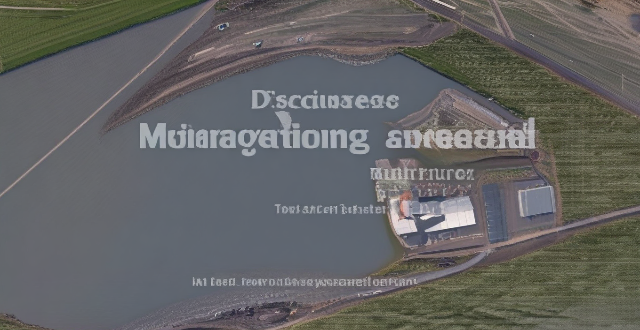
What are some emerging trends in the field of energy storage materials research ?
The text discusses the latest trends in energy storage materials research, focusing on solid-state batteries, flow batteries, metal-air batteries, supercapacitors, redox flow batteries, hybrid energy storage systems, nanostructured materials, smart grid integration, thermal energy storage, and organic/bio-based materials. Each section provides a brief overview of the technology's advantages and current research challenges.
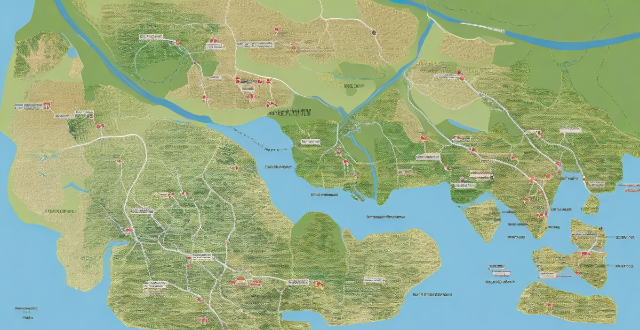
How has global warming affected agricultural practices and food security ?
Global warming has significantly influenced agricultural practices and food security worldwide, affecting areas such as altered climate conditions, pest and disease management, crop variety and production, and food security concerns. These changes include irregular rainfall patterns leading to droughts and floods, water scarcity, extreme temperature fluctuations causing heat waves and cold spells, increased pest infestations and new pest species introduction, elevated disease risks, changes in crop yields and shifting production regions, altered planting seasons, price volatility, supply disruptions, nutrient depletion, and loss of biodiversity. Farmers must adapt to these new realities to ensure sustainable food systems for the future.

What are the impacts of global warming on agricultural production and food supply ?
This article discusses the impacts of global warming on agricultural production and food supply, including changes in climate patterns, reduced crop yields, loss of biodiversity, decreased nutrient content, heat stress in livestock, changes in feed availability, increased risk of disease, reduced food availability, increased food prices, and food safety concerns.

What measures can be taken to reduce agricultural water consumption ?
Agriculture is the largest consumer of water worldwide, accounting for approximately 70% of global freshwater withdrawals. Reducing agricultural water consumption is crucial for sustainable water management and food security. Here are some measures that can be taken to achieve this goal: 1. **Improved Irrigation Systems** - Drip irrigation delivers water directly to the root zone of plants, reducing waste through evaporation and runoff. - Sprinkler irrigation uses pipes or hoses to spray water over crops, allowing more precise control than surface methods. - Micro-irrigation includes drip tapes and micro-sprayers, which apply water slowly and directly to plant roots. 2. **Water-Saving Technologies** - Soil moisture sensors help farmers determine when and how much to irrigate based on soil moisture levels. - Weather stations provide data on rainfall, temperature, and humidity, enabling farmers to adjust irrigation schedules accordingly. - Automated control systems allow for real-time adjustments in irrigation based on sensor information. 3. **Efficient Crop Management** - Crop rotation helps maintain soil health and reduces water demand by alternating between high and low water-consuming crops. - Planting cover crops protects soil from erosion and improves its ability to retain moisture. - Intercropping leads to efficient use of resources, including water. 4. **Soil Health Management** - Composting adds organic matter, improving soil structure and making it better at holding water. - Minimal tillage helps maintain soil structure, reducing water loss through evaporation. - Mulching covers soil with layers of organic material, conserving moisture by reducing evaporation. 5. **Water Pricing and Policies** - Volumetric pricing encourages conservation among farmers by charging for water based on actual usage. - Subsidies for water-saving technologies promote adoption of water-efficient practices. - Regulations limiting excessive water extraction can drive efficiency improvements. 6. **Rainwater Harvesting** - Catchment systems collect rainwater from roofs or other surfaces for later use in irrigation. - Berms and swales divert runoff into fields or storage areas for future irrigation needs. 7. **Education and Training** - Extension programs provide farmers with knowledge about water-saving techniques through workshops and demonstrations. - Farmer field schools offer hands-on training sessions where farmers learn best practices directly in their fields. 8. **Genetic Improvement of Crops** - Drought-resistant varieties develop crop varieties that require less water without sacrificing yield. - Breeding programs enhance crops through selective breeding to increase their water use efficiency. 9. **Integrated Pest Management (IPM)** - Biological control methods reduce the need for water-intensive pesticide applications using natural predators. - Cultural practices like crop rotation and intercropping also help control pests naturally. 10. **Land Leveling** - Terrace construction on sloping lands helps retain water and prevent runoff. - Land leveling equipment ensures even water distribution during irrigation. By implementing these measures, agriculture can become more water-efficient, ensuring there is enough water available for both current and future generations while maintaining agricultural productivity.
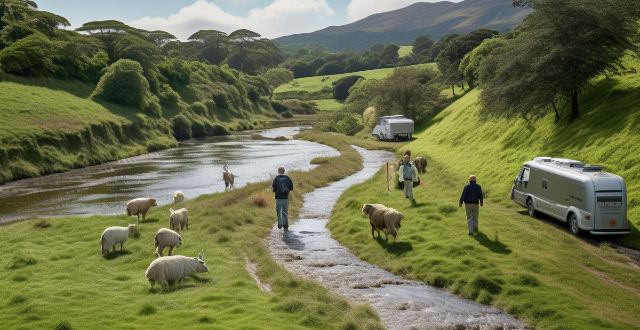
How can climate models be used to improve agricultural practices and food security ?
Climate models play a critical role in enhancing agricultural practices and ensuring food security by forecasting weather conditions, mitigating climate change effects, enhancing crop yield potential, and aiding in policy making. Applications include adapting to climate variability through crop diversification and improved plant breeding, strengthening resilience through water management and soil health maintenance. The use of these models is crucial for adapting to changing environmental conditions and ensuring global food security.

How much does it cost to obtain a tourist visa ?
This detailed guide outlines the cost implications and requirements for obtaining a tourist visa to the People's Republic of China as of July 2024, using the process in the United States as an example. The guide covers visa types, required documents, additional requirements, cost implications, and the application procedure. It also highlights recent simplifications in the document requirements and emphasizes the importance of meeting all specified requirements and being prepared for associated costs.

How do climate losses and damages affect biodiversity ?
The article discusses the impact of climate change on biodiversity, focusing on how extreme weather events, temperature changes, sea level rise, and altered precipitation patterns affect habitats and species. It emphasizes the need for global efforts to reduce greenhouse gas emissions and implement conservation strategies to protect vulnerable ecosystems and species.
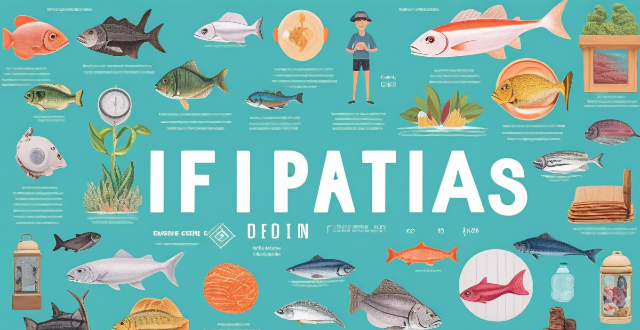
What are the economic benefits of biodiversity ?
Biodiversity plays a significant role in the global economy by providing various economic benefits. These include increased resilience to climate change, support for sustainable agriculture, tourism revenue, pharmaceutical and medical research opportunities, ecosystem services, fisheries and food security, cultural and aesthetic value, innovation and education, risk management and insurance, and trade and livelihoods. Preserving biodiversity is crucial for maintaining these economic benefits across different sectors.

What is the relationship between biodiversity and traditional knowledge ?
The text discusses the complex interrelationship between biodiversity and traditional knowledge, highlighting how each influences and shapes the other in various ways. It explains that communities living in diverse ecosystems develop unique practices adapted to their surroundings, such as specific crop rotations or intercropping methods suited to local biodiversity. The availability of certain species also influences dietary habits, with coastal communities relying heavily on seafood while inland communities depend more on terrestrial resources. Furthermore, high biodiversity regions often lead to extensive knowledge about medicinal plants, with Indigenous communities having long histories of using local flora for healing. The need for sustainable harvesting of these plants can lead to traditional conservation practices like rotating harvest areas or planting more of certain species to ensure their survival. On the other hand, traditional knowledge often includes practices for managing resources sustainably, such as fishing techniques that do not deplete fish populations or agricultural methods that maintain soil fertility. In many cultures, certain areas are considered sacred and are protected from exploitation, serving as de facto conservation reserves. However, as biodiversity declines, so does the traditional knowledge associated with it. The loss of certain species can lead to the disappearance of associated cultural practices and knowledge. With diminished biodiversity, traditional knowledge becomes less effective, leaving communities vulnerable to ecological shifts. In conclusion, the relationship between biodiversity and traditional knowledge is one of mutual dependence and influence. While biodiversity shapes the development of traditional knowledge, this knowledge also plays a critical role in maintaining and conserving biodiversity. Preserving both is essential for the well-being of our planet and its people.
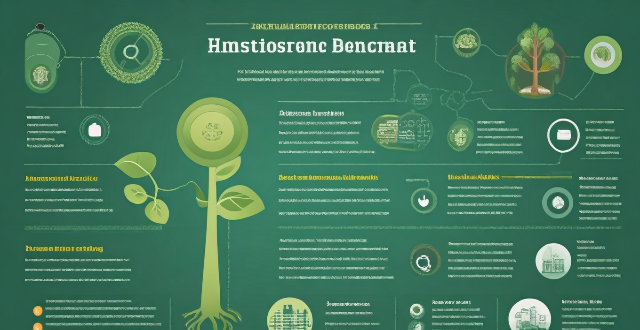
How can biodiversity be integrated into national development plans ?
Biodiversity is crucial for ecosystem services and human well-being. Integrating it into national development plans ensures sustainable growth. Key strategies include implementing National Biodiversity Strategies and Action Plans, legal protections, sustainable land use planning, economic incentives, education, and research. These measures promote conservation while balancing human needs, fostering a future where biodiversity thrives alongside human prosperity.

How do celebrities manage their online presence and reputation on social media ?
Celebrities manage their online presence and reputation on social media by hiring a social media manager, maintaining consistency across platforms, engaging with fans, promoting positive messages, handling criticism gracefully, and monitoring their image. These strategies help them maintain a positive online presence while connecting with fans and promoting their work effectively.

How do celebrities establish and maintain a successful personal brand ?
Celebrities establish and maintain a successful personal brand by defining their brand persona, building a strong online presence, being consistent in messaging and imagery, networking and collaborating with others, staying true to themselves, and continuously learning and evolving. A strong personal brand helps celebrities stand out in their industry and build a loyal fan base.

What are the main causes of climate refugee migration ?
Climate refugees are people forced to leave homes due to climate change impacts, including natural disasters, sea-level rise, and changes in agricultural productivity. These factors have led to displacement of millions globally, requiring a comprehensive approach to mitigate effects and support affected individuals.
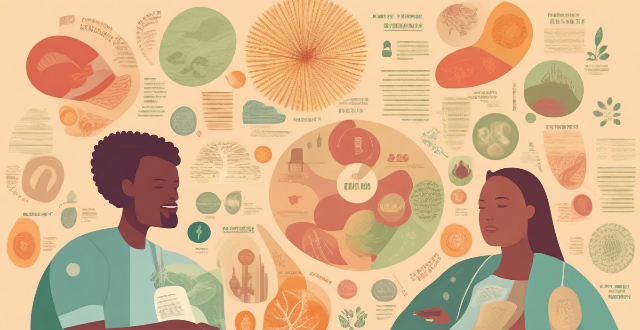
What role does anthropogenic activity play in the emergence and spread of viruses ?
This text discusses the role of human activities in the emergence and spread of viruses, highlighting deforestation, urbanization, agricultural practices, and global travel as significant contributors. It suggests actions to mitigate these effects, such as protecting natural habitats and promoting sustainable agriculture, and emphasizes the need for improved public health infrastructure and responsible travel practices.

What policies are needed to support small-scale farmers dealing with climate change impacts on agriculture ?
Policies to Support Small-Scale Farmers in Climate Change Impacts on Agriculture: 1. **Financial Support and Insurance Mechanisms**: Provide access to credit facilities and crop insurance schemes tailored for small-scale farmers, along with social safety nets during extreme weather events. 2. **Education and Training Programs**: Organize training sessions on climate-smart agricultural practices and sustainable land management, disseminating information through extension services and mobile technology. 3. **Research and Development**: Support research into climate-resilient crop varieties and facilitate the transfer of appropriate technologies to farmers, promoting precision agriculture where feasible. 4. **Infrastructure and Market Access**: Invest in rural infrastructure like irrigation systems and enhance transportation networks, assisting farmers in accessing diverse markets and providing market information. 5. **Land Tenure and Property Rights**: Ensure secure land rights for small-scale farmers and address gender inequalities in property rights, encouraging collective action through farmer groups and cooperatives. 6. **Policy Coherence and Multi-Sectoral Approach**: Align agricultural policies with national climate change strategies, coordinating efforts across relevant sectors and collaborating with international organizations focused on climate adaptation in agriculture.

What are the main causes of climate disasters ?
The main causes of climate disasters are greenhouse gas emissions from burning fossil fuels, deforestation and land use changes, industrial processes and waste management, agricultural practices, and natural factors such as volcanic eruptions, solar radiation, and ocean currents. Human activities are the primary drivers of climate change, leading to more frequent and severe weather events like hurricanes, droughts, and floods. To mitigate these impacts, reducing greenhouse gas emissions through sustainable practices is essential, along with understanding and adapting to natural factors.
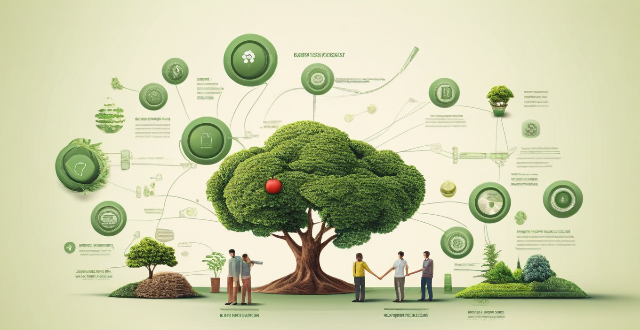
What are the benefits of using climate services in agriculture ?
Climate services offer significant benefits to agriculture, enhancing productivity and sustainability. They aid in crop planning, risk mitigation, resource optimization, market competitiveness, and environmental stewardship. By using these services, farmers can make informed decisions about crop management and resource allocation, leading to a more resilient and profitable agricultural sector.

How can we conserve and protect biodiversity in our local communities ?
The text discusses the importance of biodiversity and provides various ways to conserve and protect it in local communities. It suggests creating awareness through education, using media platforms, practicing sustainable living by reducing waste and conserving energy, protecting habitats by preserving natural areas and controlling invasive species, supporting local conservation efforts through volunteering and advocating for policies, and promoting eco-friendly practices in businesses. The goal is to contribute to a healthier planet by taking small actions towards biodiversity conservation.
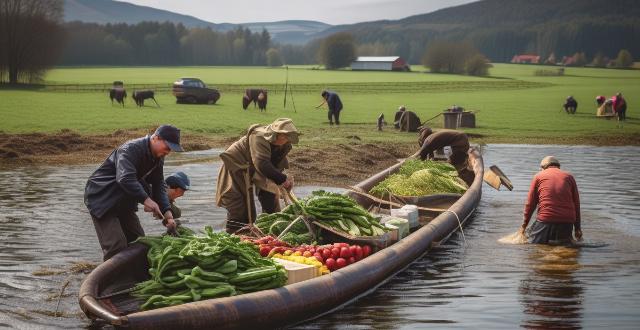
How can we ensure food security in the face of extreme weather events caused by climate change ?
The article discusses strategies for ensuring food security in the face of extreme weather events caused by climate change, including diversifying crop production, improving water management, using climate-resilient crop varieties, adopting sustainable agricultural practices, strengthening early warning systems and disaster risk reduction, supporting smallholder farmers, and promoting policy coherence and international cooperation.
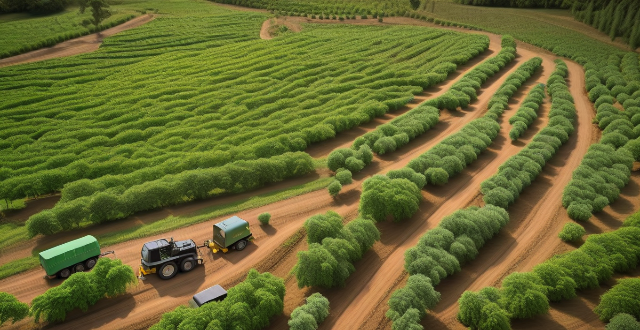
How do different regions around the world cope with climate change-related threats to their food sources ?
Coping with Climate Change: Global Strategies for Food Security explores how various regions are adapting agricultural practices to ensure food security amidst climate change. Asia is focusing on modernizing irrigation systems and researching drought-resistant crops. Africa is promoting small-scale farming techniques and agroforestry. Europe is utilizing precision farming and developing climate-smart crops. North America is practicing rotational grazing and using genetic engineering for more resilient crops. South America is embracing agroecology and community-based adaptation. Australia and Oceania are managing soil salinity issues and heat tolerance research. Policy initiatives include improving access to finance for smallholder farmers and establishing regulatory frameworks. Community-level actions involve farmer training programs and local innovations like community gardens. Technology adoption includes mobile apps for weather information and remote sensing for crop monitoring. The conclusion emphasizes the importance of combining traditional knowledge with modern technology to address climate change and ensure global food security.
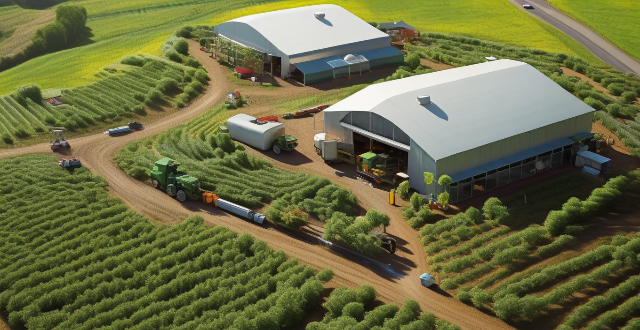
What role do sustainable farming practices play in maintaining food security amidst changing climate conditions ?
Sustainable farming practices are crucial for maintaining food security amidst changing climate conditions. They help farmers adapt to these changes by enhancing soil health, improving water management, promoting crop diversification, and integrating livestock and crop production. These practices also mitigate the impacts of climate change on agriculture by reducing greenhouse gas emissions, promoting biodiversity, and encouraging renewable energy use. Supporting smallholder farmers through training, access to markets, and cooperatives is essential for implementing sustainable practices at a larger scale. Overall, sustainable farming practices are vital for building resilient agricultural systems that can withstand climate change while ensuring food security for future generations.